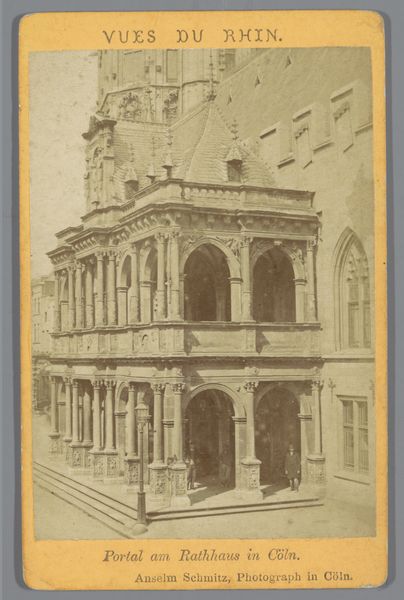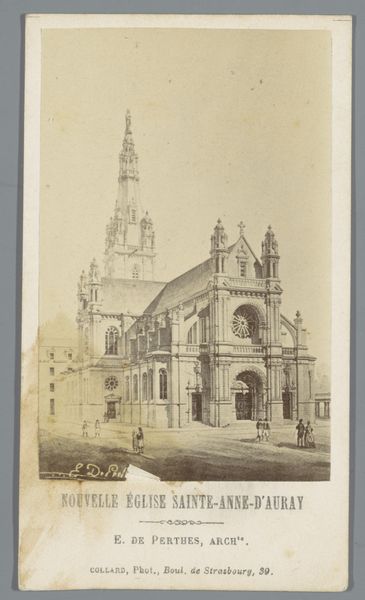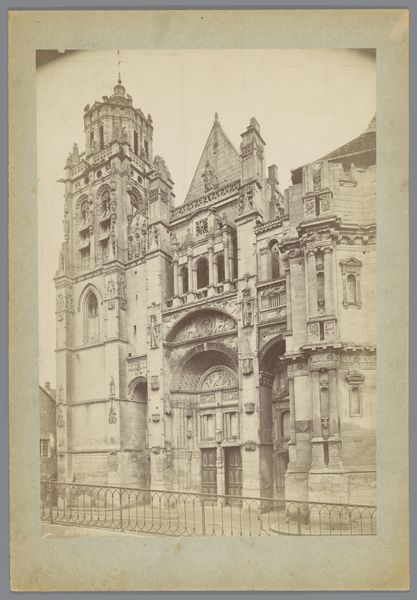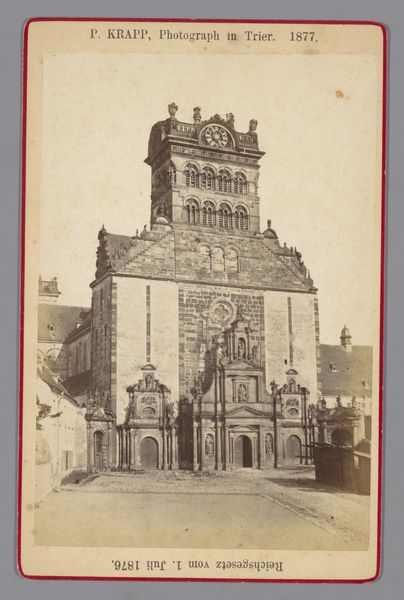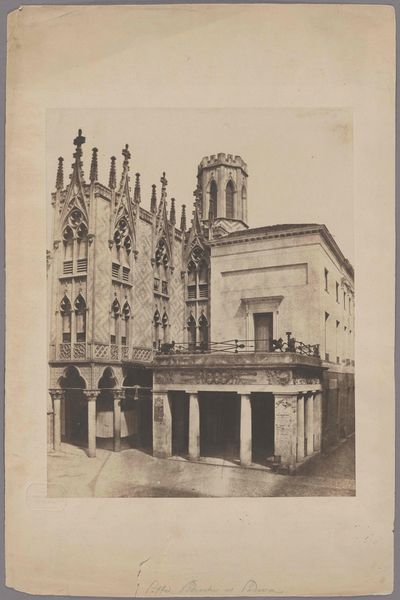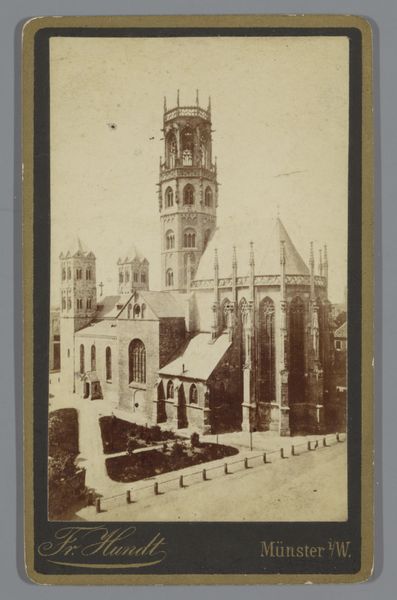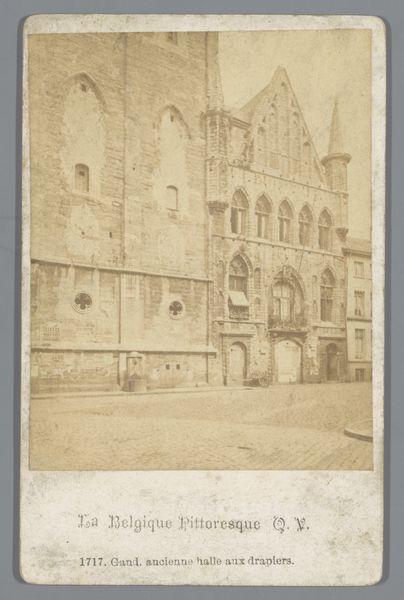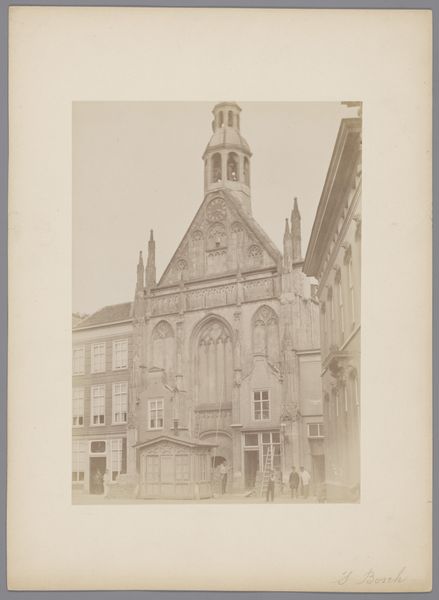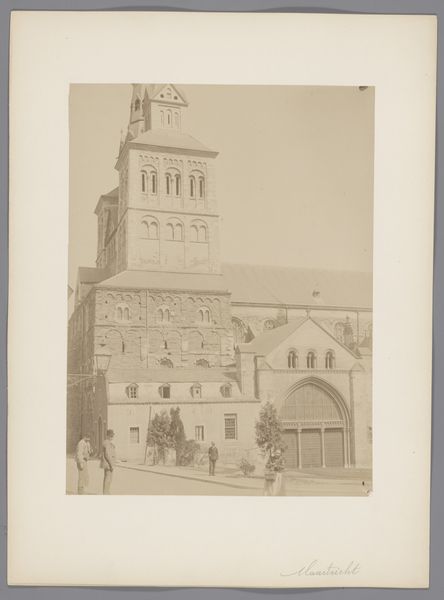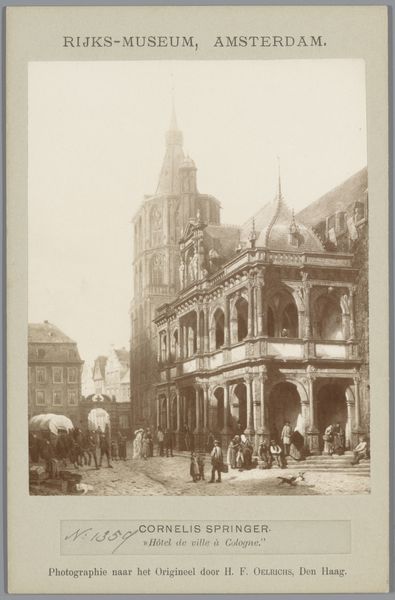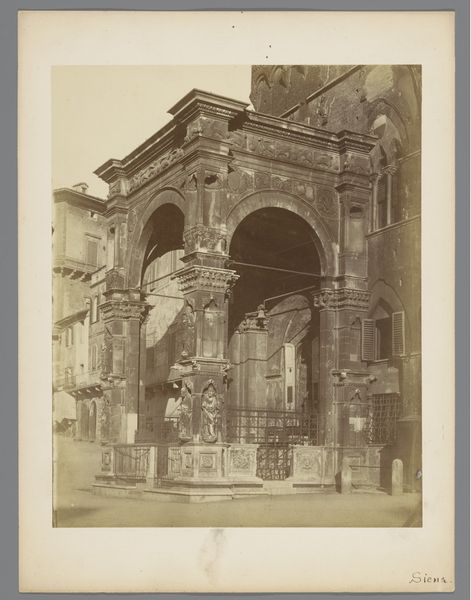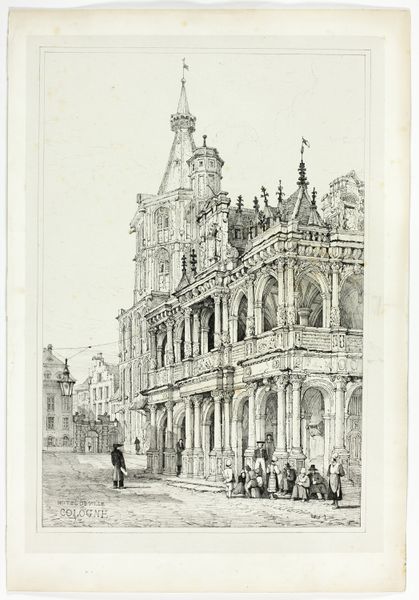
print, photography, gelatin-silver-print, architecture
# print
#
photography
#
coloured pencil
#
gelatin-silver-print
#
19th century
#
cityscape
#
architecture
Dimensions: height 106 mm, width 68 mm
Copyright: Rijks Museum: Open Domain
Curator: This gelatin silver print, "Exterieur van het stadhuis in Keulen", capturing the Cologne City Hall, comes to us from Anselm Schmitz, dating roughly from 1869 to 1903. Editor: It has a wonderfully ghostly feel. The light, the stark angles... it definitely speaks to a particular vision of the monumental. Almost intimidating, despite its small scale. Curator: Precisely. Consider the conditions of its production: the wet collodion process, the heavy equipment... It's easy to imagine the labor involved in transporting and preparing the plates right on site in a bustling city. Then think of the burgeoning print industry—how photographs like this circulated, shaping perceptions of Cologne. Editor: It’s fascinating to consider that this was mass media of its time. How do you think such an image, framed within "VUES DU RHIN," was perceived? What sort of politics are baked into it, celebrating Rhineland heritage perhaps? Curator: Indeed. Think about the institutional endorsement involved. The Cologne City Hall as a subject lends itself to civic pride and promotes certain values, reinforcing power dynamics through its presentation. Photography became a tool in solidifying a particular version of local identity. Editor: Yes, and one also cannot forget the broader history – this photo predates World War I and II. As the photograph aged, and history unfolded, does that not also add another layer of meaning to it? Is the beauty aesthetic? Or can a looming darkness also be appreciated? Curator: Absolutely. It also affects how the contemporary public will understand these historical photographs. In that, the act of selection is very interesting. One can never separate a piece from a time. Thank you. Editor: Agreed, a photograph always exists as a piece of history—both technological and political. It was a very fruitful discussion, thank you as well.
Comments
No comments
Be the first to comment and join the conversation on the ultimate creative platform.
